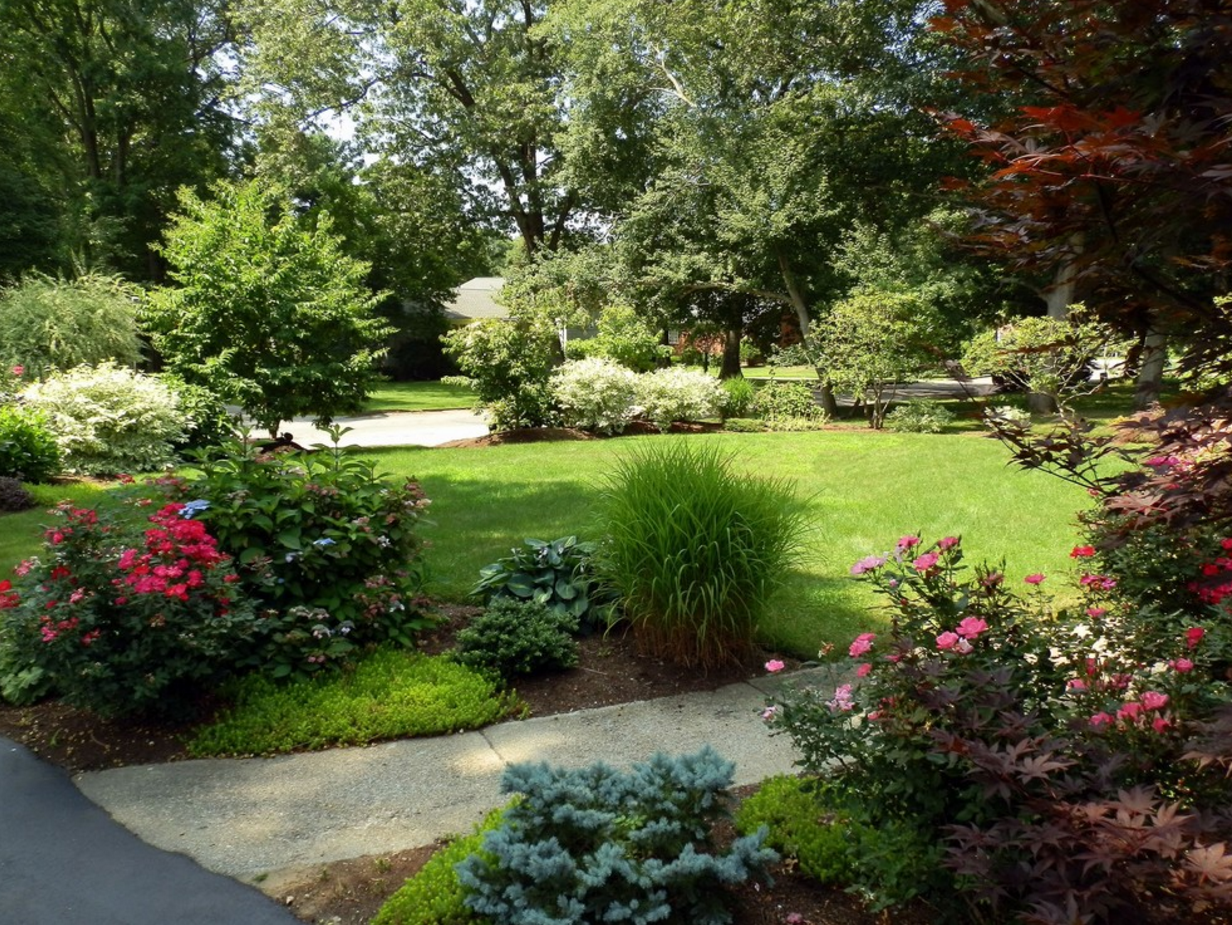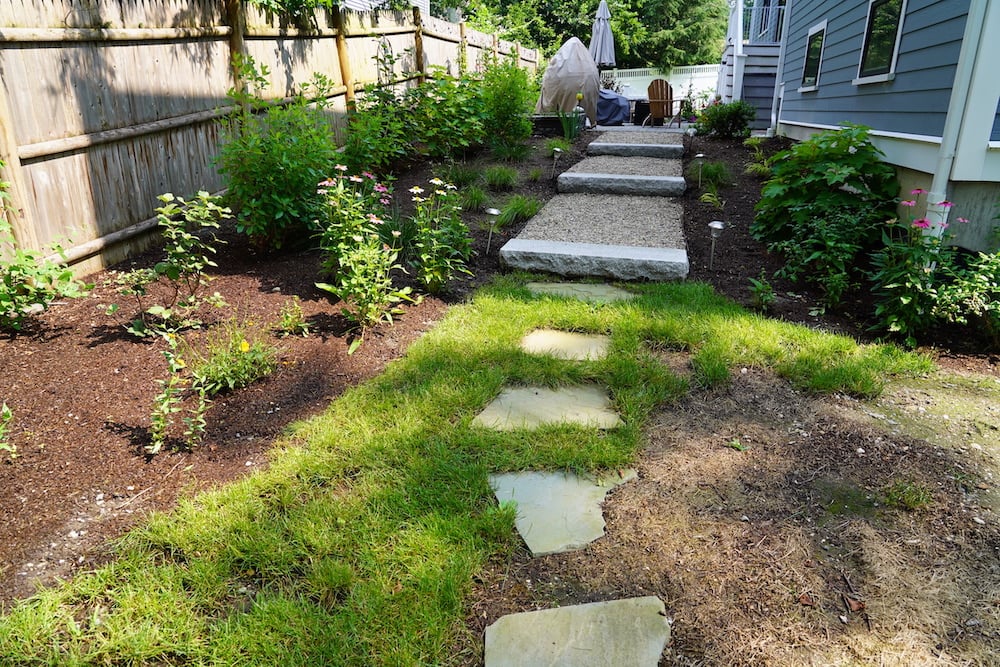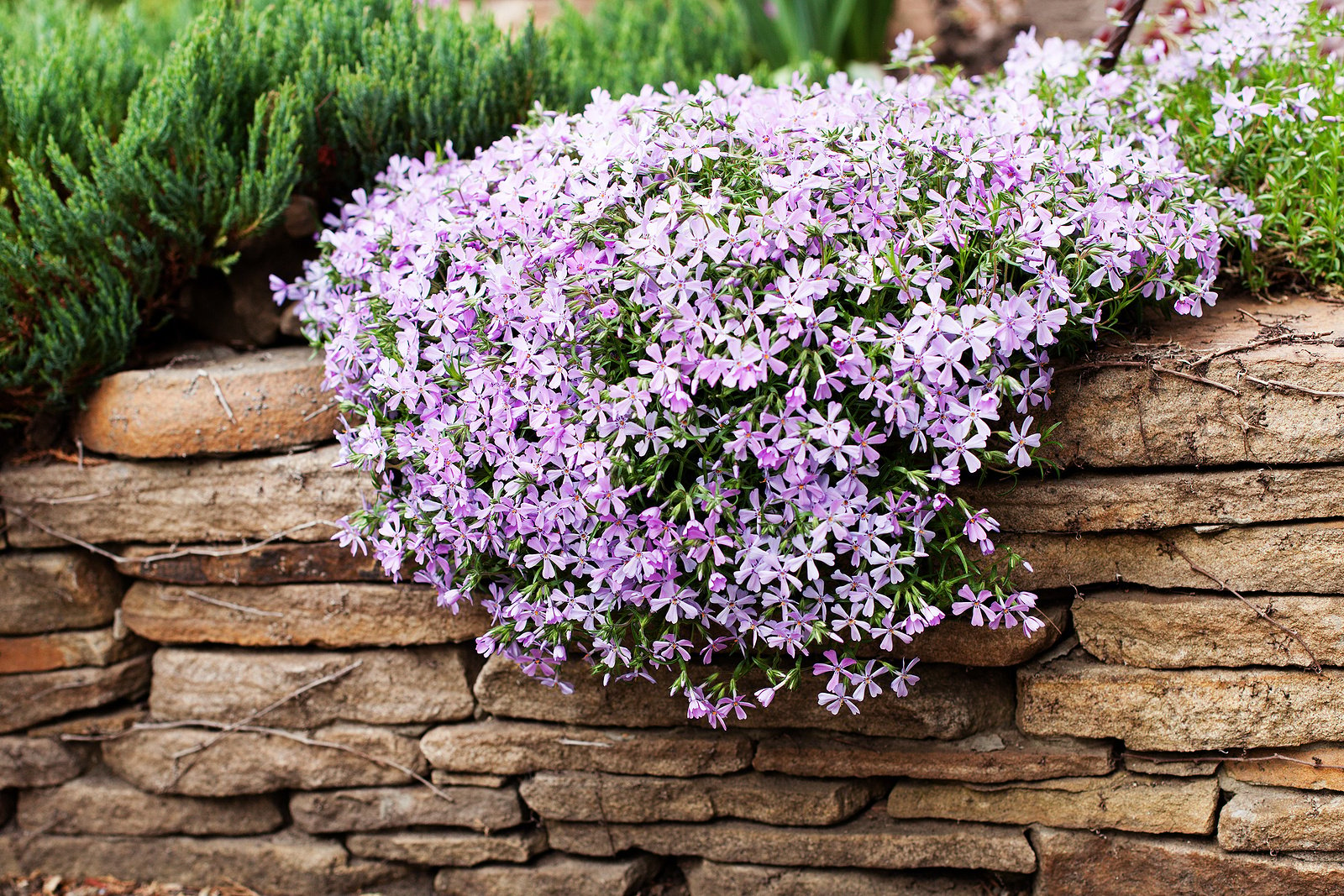Your landscape shouldn’t go “off duty” when the first frost hits. With the right plants, materials, and layout you can enjoy your yard in all four seasons — and trust us, Massachusetts gives you plenty to work with.
Here’s how to keep it beautiful (and functional) all year long:
Spring
This season is your yard’s big comeback. Make it count with early-blooming flowers like daffodils, tulips and snowdrops. You can attract pollinators with native plants such as wild columbine, bee balm and goldenrod.

Summer
This is when your landscape gets to shine — but also when it can start to feel like a chore if it’s not designed smartly. Focus on hardy, heat-tolerant plants that thrive in the Massachusetts climate.
Black-eyed Susans and coneflowers are vibrant, pollinator-friendly choices that keep blooming through hot days. Use mulch generously to lock in moisture and cut down on weeding, and group plants with similar water needs to simplify your care routine.
Fall
It’s time to think about texture, color and a little cleanup. Ornamental grasses like little bluestem and switchgrass turn coppery gold, while fall-blooming favorites such as chrysanthemums and asters put on a colorful show.
Rake leaves off your lawn to prevent smothering, but consider leaving some in garden beds to insulate roots and create habitats for beneficial insects.
Winter
Bare doesn’t have to be boring. Use evergreens like inkberry holly and arborvitae for structure, and add visual interest with bark or berries. A well-placed bird feeder or fire pit makes your landscape just as enjoyable in January as in June.



















